
In review: Death & Desire
ReviewA blank white room. A black table. A grand piano. A big white box. A crowded room. Exposed brick walls. An excited buzz. Neubacher Schor Contemporary gallery on Brock street in Toronto’s super hip Queen West district was the perfect setting for Against The Grain’s season closer.
Yes. I love AtG’s work. That is known. But they earned that love because they never fail to produce top quality theatre. They do not disappoint.
Death & Desire is a blending of two art song cycles. One, Die schöne Müllerin by the art song emperor, Franz Schubert and the second by France’s master of the bird call, Olivier Messiaen, called Harawi. It’s not an opera in the traditional sense, as per usual with AtG. It is, however, one of the most coherent, artistic and thrilling examples of lyric theatre to date.
Artistic Director Joel Ivany, (who recently received his second Dora Award nomination in Outstanding New Musical/Opera - a category he won with Figaro’s Wedding last year) interspersed the songs of each cycle, allowing for the story of a dysfunctional and doomed love between a wanderer and a miller’s daughter (which is essentially the storyline of Die schöne Müllerin). We get to hear the lady’s point of view by means of Messaien’s Harawi and the result is both heartbreaking and breathtaking.
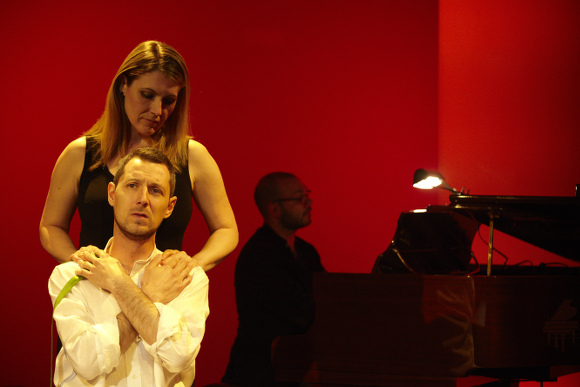
The first notes you hear belong to mezzo soprano Krisztina Szabó. She began singing delicately with a white tone at the back of the hall behind the audience and you knew in a moment you were in for a ride. Szabó’s crystal clear voice (and might I add, deadly accurate) filled the awkward space effortlessly, and when she released the full power of her sound, it was stunning. Her careful use of straight tones and open vibrato were incredibly tasteful, all the while giving a slight doff of the cap to Messaien’s love of birdcall.
This is the best work I’ve seen her do, and a large part of that is due to her first rate work as an actor on stage.
Also. Krisztina Szabó. Mad scenes. #MicDrop.
She was in complete command of her physicality at all times which made it impossible not to watch her. The intimacy of the venue really allowed the audience to see the nuanced character work she was doing. This is no mean feat when singing repertoire as demanding as this. Her character’s descent into madness was honest, calculated, and carefully executed. At times, in her mayhem, she became almost predatory which was even more enthralling.
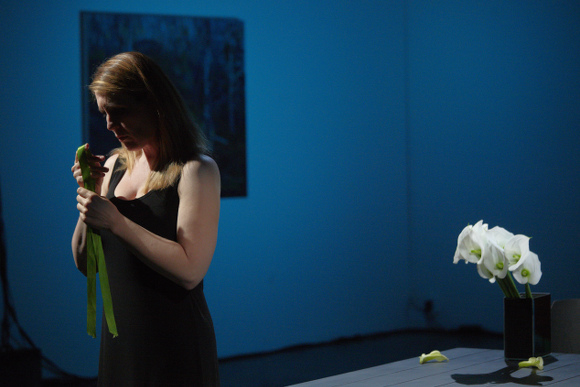
Bass-Baritone Stephen Hegedus’ raw, emotional delivery of one of Schubert’s chefs d’oeuvre was inspiring to watch as a singer. His thick, ringing high notes and his low notes that were so effortless they deceived you as to how low they really were, proved his mettle as fine artist. His delivery always had a solid line, wonderful diction, and really was at the top of his game. I’ve always been a fan of Hegedus (a #hegghead?) but tonight I was inspired and I found myself asking why I don’t listen to more art song.
Stephen’s emotional journey from start to finish is finessed, graceful and most importantly - true. His oscillations between love and frustration and hope and resign were all honest and raw and moving.
The chemistry between the two is electric. Their voices, although they never sang in tandem, we’re perfectly suited to one another. The two were also very adept at showing the love behind each physical contact despite how violent the interaction may be.
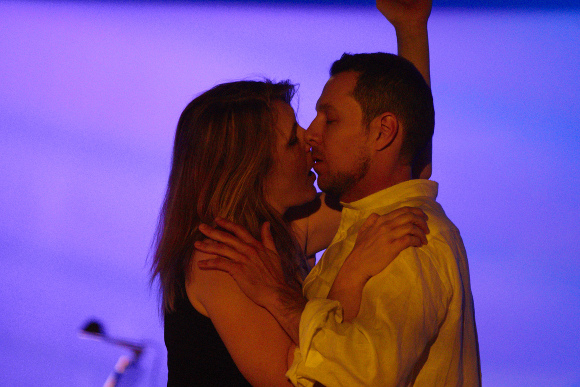
Hegedus sings in German, Szabó in French, and Quechua (a language of the Andes region in South America). But don’t worry, they project translations.
Michael Gianfrancesco’s costumes were simple and clean. Hegedus in white linen, Szabó in a slinky, form fitting black dress. His set was a simple black table and a black rectangle on the floor with a giant white box, upstage centre behind the piano. Everything about this show was designed to highlight the journey of the characters.
Lighting designer Jason Hand reminds us why everyone in the country is trying to give him awards for his work. His use of the gallery’s own walls to create a 3⁄4 room’s worth of cyclorama that he could colour at whim - and that large white box I mentioned earlier becomes a light box with some really incredible hues. His ability to keep the singers lit among some massive washes of colour, was arresting. You have to see his work to really believe it.
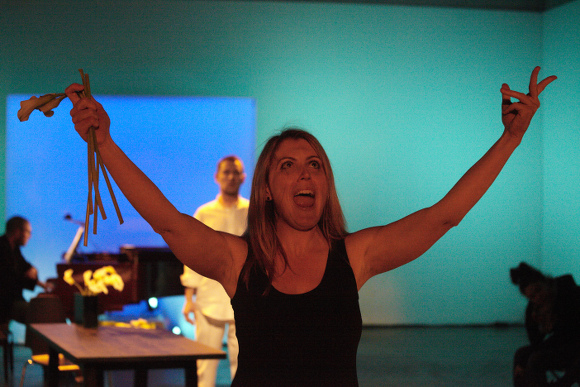
There were some issues, but they were with the space, nothing with the production. The general seating arrangement was closely packed and difficult to see if you’re not on one of the raised platforms at the back, or under 5’10”. I saw everything through strategic ducking, but we found a solution at intermission; it by no means detracted from appreciating the work of the musicians, that’s how impressive they were.
Speaking of musicians, music director and pianist - nay, orchestra - for this show was none other than the singular Christopher “Topher” Mokrzewski. His chops are unbelievable. First, he played Harawi with such agility and expression, his execution of Messiaen’s massive tone clusters, and bizarre arpeggios were clean and clear and dramatic as all get out. His passion and drive in the Messiaen in no way clouded a clean, crisp, and thrilling rendition of the Schubert.
Joel Ivany’s use of the space was masterful. There’s a large brick wall dividing the “white room” from the audience with a massive cut out to look in on. I felt like I was watching through someone’s living room window, or giant life-size television set. It was essentially an old school proscenium arch. The theatre geek in me really appreciated that. His manipulation of the storyline, having her move between real time and memories, takes you a bit of time to realize where and when you are; but that, in my humble opinion, was the brilliant thing about it.
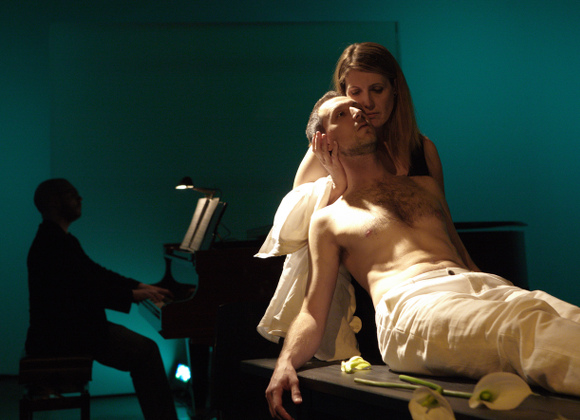
Although, I would like to see it remounted in the round some day, I think that would be kind of dope.
There’s really no reason not to see this show. It’s beautiful, affordable, they sell you booze there that they encourage you to drink through the show, and they’re not a bad looking crew either.
There are many reasons why Against The Grain Theatre is tearing up the opera scene, and this show is one of them. Follow the links below for tickets and full details.


Comments